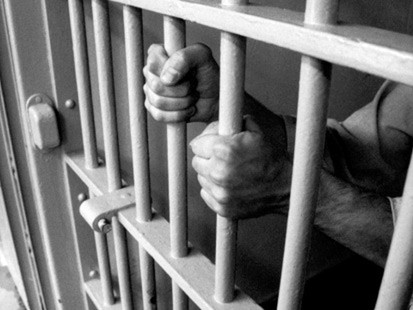by John Bowden, HMP Shotts
 Fyodor Dostoevsky, the Russian novelist and sometimes political dissident, once wisely observed that a good barometer of the level of a society’s civilisation is the way it treats its prisoners, the most disempowered of all social groups.
Fyodor Dostoevsky, the Russian novelist and sometimes political dissident, once wisely observed that a good barometer of the level of a society’s civilisation is the way it treats its prisoners, the most disempowered of all social groups.
Prisons are concentrated microcosms of the wider society, reflecting its social and political climate and the balance of forces that characterise its political culture. The more authoritarian and politically oppressive the society, the more brutal its treatment of prisoners; changes in state penal policy usually reflect shifts in the relationship of power between the poor and powerless and the elites who constitute the ruling class, and it is always the more marginalised and demonised groups such as prisoners who experience the repression more nakedly when society begins to shift even further to the right.
During the 1960s, 1970s and early 1980s structures of established power in British society were seriously challenged and the movement for radical social change manifested itself within the prison system in the form of protests, strikes and uprisings, creating an organised prisoner resistance movement that was recognised and supported on the outside by political activists, radical criminologists and prison abolitionists. The struggle of long-term prisoners was recognised by such groups as a legitimate political struggle against an institution designed to punish the rebellious poor as an integral part of an entire state apparatus of repressive social control, alongside the police and judiciary. Just as heightened social struggle in broader society caused a shift in the balance of power, prisoners in the long-term system used solidarity and self-organisation to empower themselves as a group. The climate of increased struggle and freedom permeating society at that time even found limited reflection in the thinking of those administering prisons with the adoption of the one relatively liberal recommendation of the 1968 Mountbatten report concerning prison security, namely that whilst maximum security prisons should make physical security as impregnable as possible, the regimes within such institutions should be as relaxed as possible.
But just as changes in the balance of power can be to the advantage of progressive forces in society so they can shift the other way. Britain in the 1980s and 1990s saw the defeat of the organised working class movement and the apparently final triumph of neo-liberal capitalism (deregulation, free trade, unfettered profits and minimal state benefits – in short, capitalism at it’s most savage) and a Thatcherite ideology of greed is good and ‘there is no such thing as society’. This found expression in the treatment of prisoners with the seizing back of the long-term prison regimes and their remoulding into instruments of ‘dynamic security’ and naked repression.
And of course the economic principles of neo-liberal capitalism also found expression in the prison system with ‘market reforms’ and the flogging off of increasingly greater parts of it to multi-national private prison entrepreneurs. Prisoners would now be taught and conditioned to know their place in a massively unequal society and prisons would revert to their original purpose of remoulding working class ‘offenders’ into obedient slaves of capital and those who own it. The huge proliferation and empowerment of behavioural psychologists in the prison system over the last decade is symptomatic as the psychological breaking and recreating of prisoners in the image of the defeated and compliant outside working class has become once again the main function of prison. Rebellion and defiance in prisoners are now labelled as ‘psychopathic’ and ‘social risk-factors’, which, depending on how they are ‘addressed’, will determine the length of time one spends behind bars, especially for the growing number of ‘recidivist offenders’ serving indeterminate sentences for ‘public protection’.
As once tight-knit working class communities were fractured and destroyed following the last high point of organised working class struggle during the 1984 miners strike, so the solidarity and unity of long-term prisoners has been broken and has withered away. The flooding of heroin and crack cocaine into now marginalised, poor communities created an almost alternative economy and this is reflected in the changing nature of the prison population. What had been a generation of prisoners from strong working class communities imbued with a culture of solidarity, mutual support and a readiness to challenge official authority, was increasingly replaced by prisoners with no memory of a time before the victory of Thatcherism and the dog-eat-dog culture it bred and encouraged.
The uprising at Strangeways prison in 1990 was the last significant expression of collective defiance and protest in a British jail and is unlikely to be repeated in such a form.
Justice Secretary Chris Grayling, with his Tory ‘attack dog’ reputation and contempt for the human rights of prisoners, blended of course with his determination to sell off virtually the whole of the criminal justice system to multi-national capitalism, is a perfect representation of the social and political climate outside prison. Deep economic crisis generates social fear and insecurity, and the scapegoating of marginalised and demonised groups who are used as a focus for public anger. Folk devils and moral panics are stock-in-trade for the tabloids, Tory politicians and far right groups when the social climate is at its most receptive for easy, powerless targets. Grayling is pandering to what he imagines is the masses’ appetite for revenge, as long as its not focused on those actually responsible for the economic and social destruction of people’s lives.
If, as Dostoevsky believed, the treatment of prisoners is an indicator of a society’s level of civilisation then we seem to be entering another Dark Age. History provides us with some chilling examples of what can happen when an apparently modern and developed society enters such a phase.




